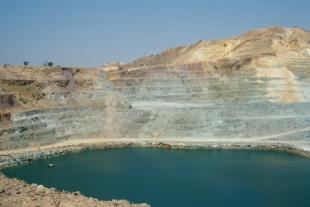For the United Nations Development Programme, SSP&A staff completed the first comprehensive environmental assessment of Cyprus' largest copper mining and mineral processing complex. The Lefka-Xeros mining area in northern Cyprus comprises a former underground mine, open pit mine, mineral processing plant, waste rock, and ore piles, and more than 200 acres of tailings ponds, all of which were abandoned in the 1970s and 1980s. Ores from three mines were transported to the processing plant, where gold, silver, pyrite, and copper were produced by methods including flotation, cementation, and leaching for both gold (cyanide process) and copper (sulfuric acid process). Today, active agricultural and residential areas abut the former mining and mineral processing areas.
A comprehensive site evaluation was conducted that included evaluation of all previously collected environmental data (in Greek, Turkish, and English), collection of new soil, groundwater, and mine tailings samples, evaluation of potential environmental impacts, and development of a strategic plan to evaluate and manage short-term hazards, quantify environmental impacts and develop remedial options including beneficial re-use of the mine tailings.
Successful completion of this project involved coordination with Greek Cypriot, Turkish Cypriot, and UN communities.

